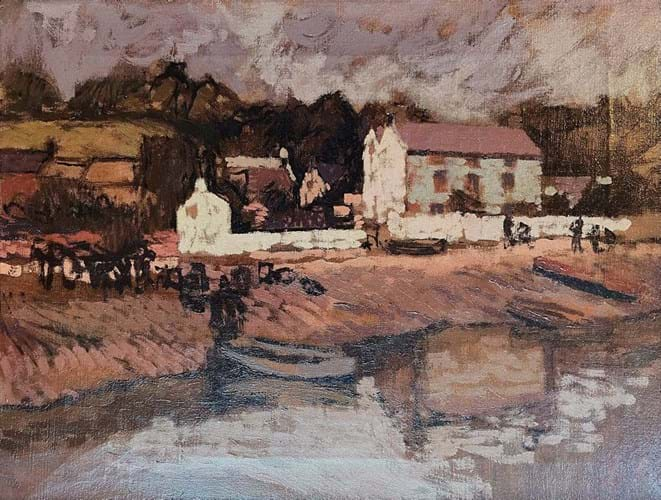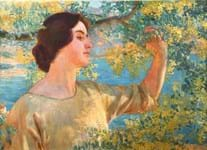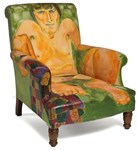
Breakfast, (c.1932), by Edward Morland Lewis, oil on canvas, priced at £12,500 at Martin Tinney Gallery.
Welsh painter Edward Morland Lewis (1903-43) worked alongside the greats of Modern British art, but his pictures are almost entirely unknown on the secondary market.
Over 80 years after his last known dedicated show, a new exhibition at Welsh art specialist Martin Tinney Gallery in Cardiff could shed some light.
“His output was quite small and his pictures hardly ever come up in the salerooms”, says dealer Tinney, who has spent 20 years sourcing material for the select 12-picture exhibition. “I’m not even sure there are any [significant collectors] out there because of the scarcity of them.”
London training
Born in Carmarthen, the son of the watercolourist Benjamin Archibald Lewis, Morland Lewis trained at St John’s Wood School of Art and at the Royal Academy Schools in London. There he met Walter Sickert and promptly left to become his pupil and assistant.
He concentrated on landscapes and genre scenes and, like Sickert, tended to paint patchwork areas of colour laid over warm under-painting.
Morland Lewis became a member of the London Artists’ Association in 1930 and exhibited with the group until it was disbanded in 1934. He joined the staff of Chelsea College of Art where his colleagues included Henry Moore, Graham Sutherland and John Piper.

Riverside Laugharne (c.1931) by Edward Morland Lewis, 13 x 17in (34 x 45cm) oil on canvas, £15,000 at Martin Tinney Gallery.
His artistic career was short-lived; he died from malaria while on active service as a camouflage officer in north Africa in 1943. He was 41.
Tinney first encountered the artist’s work on the walls of the National Museum and Galleries in Cardiff where there is an especially large holding along with the Carmarthenshire County Museum.
Morland Lewis paintings also appear in the collections at Tate Britain, Manchester Art Gallery and Pallant House Gallery among others.
“His pictures have real presence but because they are close-toned, quiet pictures, reproductions don’t do them justice”, says Tinney.
The exhibition, held at the Cardiff gallery from February 21-March 11, is probably the first time a group of pictures by Morland Lewis have been shown together since The Leicester Galleries in 1941 – the last known exhibition of the artist’s work.
The dozen pictures have all been sourced from auctions and private collections with prices ranging from £4000 to £15,000.
The only non-landscape is a 17in (44cm) square interior scene called Breakfast, dated c.1932, and priced at £12,500. Its companion piece is in the National Museum and Galleries in Cardiff and is thought to depict the artist’s brother Eric in bed. Morland Lewis is known to have shared accommodation with his brother in London during the 1930s.

Quayside (c.1930-35) by Edward Morland Lewis, 17 x 23in (44 x 60cm) oil on canvas, £9750 at Martin Tinney Gallery.
The remaining pictures focus predominately on his Welsh landscapes together with a small selection of Irish and French subjects.
“He spent two years in Cork from around 1937-39 and he also painted some of the coastal villages in northern France and painted a bit in Spain – and of course west Wales and Carmarthenshire predominantly”, says Tinney.
Many of his paintings were based on photographs he took himself. A comparison of one of his photographs with the painting of the same scene reveals how he transformed the information from one medium into another with the main composition faithfully transcribed, but the tonal relationships slightly enhanced.














